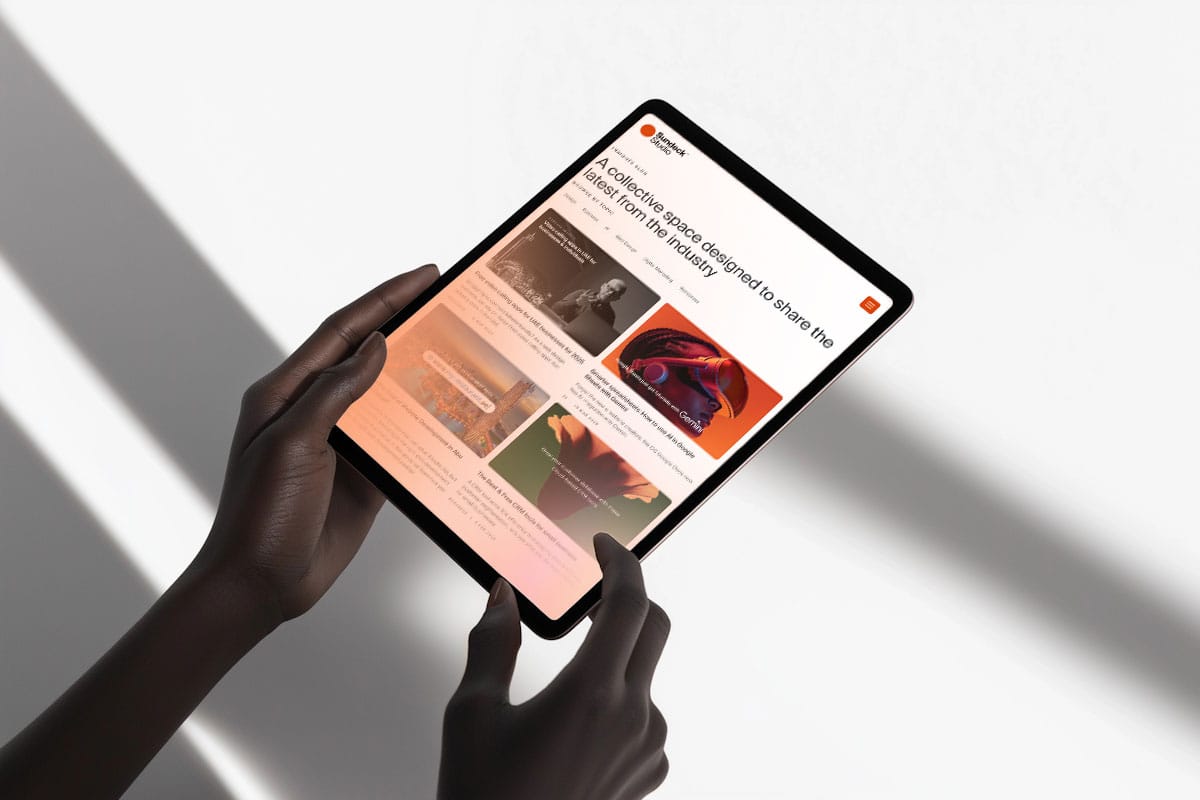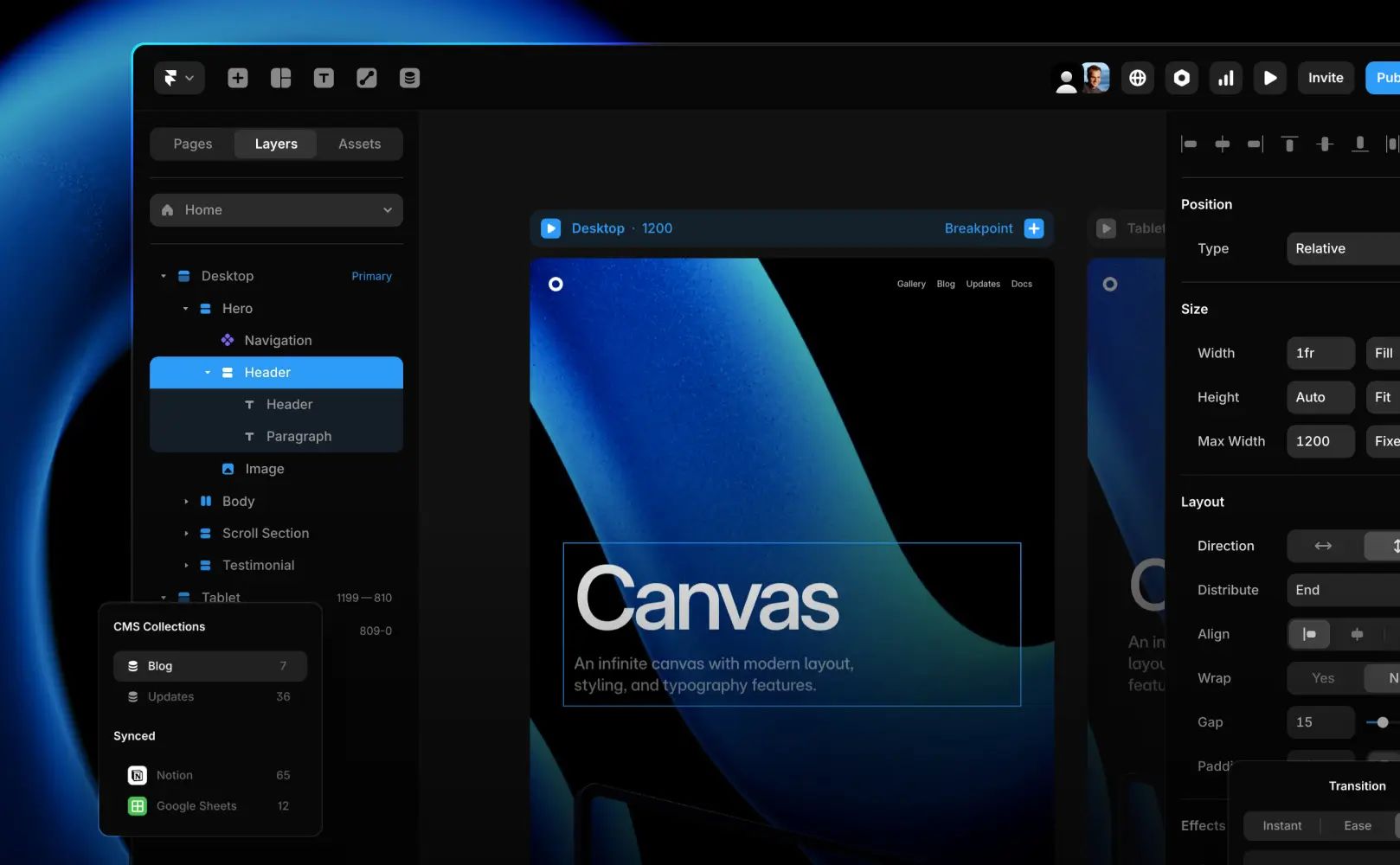
Web design is the strategic process of creating a digital experience for your business that you with your potential customers through strategy based visual design and well-delivered messaging. It combines aesthetic decisions with functional structure to deliver websites that don't just look good but actually work for your business goals.
Think of a successful website as your best salesman, who works 24 hours, representing your business to millions of people across the internet. It's not just about choosing colours and fonts. It's about understanding human behaviour, building accessible interfaces, optimising for search engines and creating digital space where visitors naturally move toward the actions you want them to take, be it increasing business revenue, sales, brand value, a well-strategised website can do that for you.
If you're looking for a trusted web design agency that combines technical expertise with strategic thinking, get in touch with one of our local team members:
- Web design agency Brisbane - Leading WordPress web design Brisbane and custom development
- Web design agency Sydney - Web design company Sydney specialising in conversion-focused websites
- Web design agency Abu Dhabi - Web design company Abu Dhabi delivering Middle Eastern digital innovation
- Web design agency Auckland - Based in Mt. Eden, Auckland, NZ web development team crafting performance-driven websites for Kiwi businesses
Book your free consultation and let's discuss how strategic web design can transform your digital presence.
Let's break down a web design process into its most essential parts.
Look and feel of your website design
The visual layer of your website creates immediate emotional response. Within 50 milliseconds, visitors form opinions about your brand based purely on what they see. This isn't superficial. It's human psychology at work.
Effective visual design establishes trust, communicates professionalism, and guides attention to what matters most. When a web design agency in Brisbane or Abu Dhabi talks about "brand alignment," they're really talking about ensuring every visual choice reinforces who you are and what you promise.
Colour psychology, typography hierarchy, white space management, and visual consistency all contribute to creating interfaces that feel both professional and approachable. This is where many businesses stumble. They either go too corporate and lose personality, or too creative and sacrifice usability.
The best web design balances both.
Let's quickly breakdown at some of the essentials to look for when thinking about the look and feel of your website.
High Quality Images for Web Design
Images carry significant weight in web performance and user perception. Low-quality visuals immediately signal amateur execution, while oversized files destroy page speed and search rankings.
Professional website development in Brisbane focuses on image optimisation as a core discipline. This means properly sized assets, modern formats like WebP, appropriate compression levels, and lazy loading for images below the fold.
Stock photography has its place, but custom imagery creates differentiation. When users see the same stock photos across multiple websites, trust erodes. Original photography or illustration tells visitors this brand invests in authenticity.
Alt text for images isn't optional. It's essential for accessibility and SEO. Every image should carry descriptive alternative text that serves both screen reader users and search engine crawlers trying to understand your content context.
Responsive Web Design
Responsive design isn't a feature anymore. It's baseline expectation. More than 60% of web traffic now comes from mobile devices, and that number continues climbing.
Responsive web design means your website automatically adapts its layout, images, and functionality to whatever screen size someone uses. Our website designers in Brisbane and Sydney design on fluid grids, flexible images and as web developers, we use CSS media queries that ensure your site works beautifully whether viewed on a smartphone, tablet, laptop or desktop monitor.
How is responsive web design is important for SEO: Google's mobile-first indexing means the search engine primarily evaluates your mobile experience when determining rankings. If your site fails on mobile, it fails in search results and your business is invisible to your potential customers searching for your service or product, simple as that.
True responsive design goes beyond just shrinking content. It rethinks navigation patterns, adjusts interactive elements for touch interfaces and prioritises content hierarchy differently on smaller screens. A button that works perfectly with a mouse cursor needs completely different sizing and spacing for thumbs on mobile.
User Experience (UX): What It Is and Why It Matters
User experience encompasses every interaction someone has with your website. From the moment they land to the second they convert or bounce, UX determines whether your website achieves its purpose.
Poor UX costs money. High bounce rates, abandoned shopping carts, and frustrated visitors all translate directly to lost revenue. Great UX feels invisible. Users accomplish their goals without friction, often without consciously noticing the thoughtful architecture making it possible.
Web development services in Australia increasingly prioritise UX research and testing as core deliverables, not afterthoughts. Because data consistently shows that investing in UX returns value at ratios between 2:1 and 100:1 depending on industry and implementation.
Easy Navigation
Navigational architecture determines whether users find what they need or give up in frustration. Most visitors won't hunt through multiple menu layers to find information. They'll leave and find a competitor with clearer pathways.
Effective navigation follows predictable patterns. Primary navigation typically sits in the header. Important actions get prominent placement. Related content groups logically.
For complex websites serving multiple audiences, mega menus (see example of cities' mega menu we built for The Sustainable City) or faceted navigation might make sense. For simpler sites, a clean header menu and strategic footer links often suffice. The key is testing with real users, not assuming you know what works.
As a leading web design company across Sydney and Brisbane, in our client meetings we discuss the importance of clear website navigation that serves both new visitors trying to understand your offerings and returning users trying to access specific information quickly. Both journey types matter.
Information Architecture
Information architecture is the invisible structure organising your content into logical categories and hierarchies. It's the difference between a website that makes sense and one that confuses everyone who visits.
Good IA starts with understanding your audience's mental models. How do they think about your products or services? What language do they use? What relationships do they expect between different content types?
Card sorting exercises, user interviews and analytics analysis all inform IA decisions. For a website development project in Brisbane, this research phase prevents expensive redesigns later when you discover users can't find your most important conversion pages.
Site maps and user flow diagrams document IA decisions and ensure everyone on the project understands the intended structure before a single pixel gets designed.
In our web design agency practice, we take all these considerations during our 'Discovery' phase.
Familiar Layout
Users carry expectations shaped by millions of websites they've visited before. Fighting against established patterns usually creates confusion, not innovation.
Logos typically sit top-left and link home. Search boxes appear top-right. Shopping carts live in the upper corner. Contact information goes in footers. These aren't rules without reason. They're conventions that reduce cognitive load.
That doesn't mean every website should look identical. Personality and differentiation happen within familiar frameworks. A web designer in Brisbane might create stunning visual experiences while still respecting core layout conventions that help users feel oriented.
When you break conventions, do it intentionally with clear user benefit. Don't relocate navigation just to be different. Do rethink form layouts if your research shows the standard approach fails for your specific use case.
Great User interface (UI design) that feels natural
Web designers and developers at Sundeck Studio go with the famous quote "Good design is invisible"
Good UI design translates functionality into visual elements that users can understand and find natural to use. Buttons should look clickable. Form fields should clearly indicate what input they expect. Interactive elements should respond immediately to user action.
Modern UI design emphasises clarity over cleverness. Microinteractions that provide feedback. Loading states manage expectations during processing. Error messages explain problems and suggest solutions rather than just declaring failure.
As a leading WordPress web design company in Brisbane, we emphasise on choosing UI patterns that align with how WordPress naturally works. Having WordPress specialists working in our team with over decade of WordPress development experience, we have learnt that fighting against platform conventions creates technical debt and confusion for clients who want to self-manage content post-launch.
Consistency within your UI builds user confidence. If primary buttons are blue with rounded corners on one page, they should follow the same pattern throughout the site. Consistency reduces the mental effort required to use your interface.
Well-written content that delivers information and value to the readers
Content is where most websites fail. Beautiful design wrapped around vague marketing messages serves no one. Users want clear, scannable information that helps them make decisions.
Effective web content uses short paragraphs, descriptive headings, bullet points for lists, and bold text to emphasise key points. It speaks directly to reader needs rather than waxing poetic about how innovative your company thinks it is.
SEO matters, but keyword stuffing destroys readability. Modern search algorithms reward helpful content written for humans, not content optimised primarily for robots. A web development company in Gold Coast that understands content strategy knows the balance between optimisation and genuine value.
Voice and tone should match your brand personality while remaining accessible. Technical subjects need clear explanations. Complex processes benefit from step-by-step breakdowns. Long content needs a table of contents for navigation.
Performance
Website speed directly impacts conversion rates, search rankings, and user satisfaction. Studies show that even one-second delays in page load reduce conversions by 7%. Performance isn't a nice-to-have feature. It's fundamental to success.
Fast websites require optimisation at every layer. Efficient code, compressed images, minimised HTTP requests, browser caching, content delivery networks, and database optimisation all contribute to performance.
For website development in Brisbane, performance testing should happen throughout the build process, not just at launch. Tools like Google PageSpeed Insights, GTmetrix, and WebPageTest provide actionable data about bottlenecks slowing your site.
Core Web Vitals have become ranking factors in Google's algorithm. Largest Contentful Paint, First Input Delay, and Cumulative Layout Shift all measure different aspects of performance and user experience. Hitting Google's thresholds requires intentional technical decisions throughout development.
Accessibility that meet global WCAG standards
Web accessibility ensures people with disabilities can perceive, understand, navigate, and interact with your website. This includes users with visual, auditory, motor, and cognitive impairments.
The Web Content Accessibility Guidelines (WCAG) provide international standards for accessible web design. We ensure all sites meet WCAG criteria, both because it's the right thing to do and because it protects clients from potential legal issues and fines.
Accessibility improvements often benefit all users, not just those with disabilities. Captions help people watching videos in sound-sensitive environments. Keyboard navigation assists power users who prefer not using a mouse. Clear language helps everyone understand your content more easily.
Common accessibility requirements include proper heading hierarchy, sufficient colour contrast, alt text for images, keyboard-navigable interfaces, form labels, and ARIA attributes for complex interactions. A web design agency in Abu Dhabi that takes accessibility seriously builds these considerations into every project from the start.
Performance and Security
Performance and security often get discussed separately, but they're deeply interconnected. Security measures impact performance. Performance optimisation can introduce security vulnerabilities if not implemented carefully. Both require ongoing attention, not one-time setup.
Web Hosting
Your hosting environment fundamentally determines website performance, security, and reliability. Cheap shared hosting might save money initially but typically costs more in lost conversions, security incidents, and support time.
Quality hosting provides adequate resources, regular backups, security monitoring, and technical support when problems arise.
Server location matters for performance. Hosting a site physically closer to your primary audience reduces latency. This is why, for our WordPress web design in Brisbane, Sydney and Melbourne we use Sydney based privately owned servers that delivery top class performance and security. For businesses serving multiple regions, we use (CDN) content delivery networks, that distribute content globally while maintaining a single source of truth.
Managed hosting removes technical burden from your team. When we manage hosting for our clients, we handle security patches, performance optimisation, infrastructure, backups and much more. For businesses without dedicated technical staff, such managed hosting often provides better value than self-managed alternatives despite higher costs.
However if you plan to self-host, we have listed some of the best WordPress hosting providers here. These are the hosting providers we have tested and tried on multiple websites and these companies have track record of delivering reliable WordPress hosting.
Recommended related article: Best Web hosting for WordPress based on performance & reliability
Security
Website security protects your business reputation, customer data, and search rankings. Compromised websites get blacklisted by Google, lose customer trust, and potentially face legal consequences depending on the nature of the breach and data involved.
SSL certificates encrypt data between browsers and servers. They're mandatory now, not optional. Google Chrome flags non-HTTPS sites as "not secure," immediately eroding trust. SSL also provides a minor SEO boost.
Regular updates prevent most security vulnerabilities. WordPress, plugins, and themes all release security patches addressing newly discovered issues. Falling behind on updates leaves known vulnerabilities exposed.
Strong authentication prevents unauthorised access. This means complex passwords, two-factor authentication, and limiting login attempts to prevent brute force attacks. For team environments, role-based permissions ensure people only access what they need.
Backups provide recovery options when problems occur. Automated daily backups stored off-site mean you can restore your website quickly if compromised or accidentally broken during updates. We implement comprehensive backup strategies for all website development projects in Brisbane.
Search Engine Optimisation (SEO) and AI SEO
Getting found online requires intentional optimisation for how search engines discover, understand, and rank content. SEO used to mean keyword density and backlink volume. Modern SEO encompasses technical performance, content quality, user experience, and increasingly, optimisation for AI-powered search experiences.
Traditional SEO and its importance
Traditional SEO remains foundational despite evolution in search algorithms. This includes on-page optimisation, technical SEO, and off-page signals that help search engines understand and trust your content.
On-page SEO means structuring content with proper heading hierarchy, using descriptive titles and meta descriptions, optimising images with alt text, and naturally incorporating relevant keywords. It's the difference between content search engines can't properly interpret and content they confidently present to searchers.
Technical SEO addresses site architecture, page speed, mobile-friendliness, structured data, XML sitemaps, and crawlability. As a full service web development company in Perth, Brisbane & Sydney, we handle these technical foundations for all our clients, so search engines can efficiently index your website content.
Off-page SEO primarily revolves around backlinks from reputable websites. When authoritative sites link to your content, search engines interpret this as a trust signal. Quality matters far more than quantity. One link from a respected industry publication carries more weight than dozens from low-quality directories.
Local SEO becomes critical for businesses serving specific geographic areas. Google My Business optimisation, local citations, and location-specific content help you appear in "near me" searches and local map results. For web design services in Brisbane, Abu Dhabi, or Sydney, local SEO drives qualified leads from people actively searching for nearby solutions.
We recently completed work for The Sustainable City project where strategic SEO implementation increased organic traffic by 40% within six months. This wasn't magic. It was methodical technical optimisation combined with high-quality content addressing what their audience actually searches for.
For Tokyo Headspa, Australia's leading head spa treatment centre, advanced SEO and AI SEO strategies helped them achieve the number one ranking on Google for their primary keywords across Australia. That top position translates directly to increased bookings and revenue.
Recommended related articles:
Generative Engine Optimisation (GEO) and AI SEO
Search behaviour is transforming as AI-powered tools like ChatGPT, Google's Search Generative Experience, and Perplexity change how people find information. Traditional search returns a list of links. AI search synthesises information from multiple sources and provides direct answers.
This shift requires new optimisation approaches. GEO focuses on making your content the source AI engines cite when answering queries. It's not about ranking first in a list. It's about being the authoritative source that gets referenced in AI-generated responses.
Structured content helps AI engines extract and cite your information accurately. Clear headings, concise explanations, and logical content flow make it easier for AI systems to understand and reference your expertise. Think of it as optimising for featured snippets on steroids.
Entity-based SEO matters more in AI search contexts. Rather than just targeting keywords, you want search engines to recognise your brand, products, and expertise as authoritative entities in your domain. Schema markup, consistent NAP (name, address, phone) information, and comprehensive content coverage all reinforce entity recognition.
AI search prioritises authoritative, comprehensive content over thin pages targeting individual keywords. The days of creating dozens of slightly different pages for keyword variations are ending. Modern SEO rewards depth, accuracy, and genuine expertise.
We've written extensively about how AI search really works and what it means for businesses trying to maintain visibility. Check out our detailed guide on GEO optimisation explained to understand the technical details and strategic implications of this evolution.
For web design agencies in Brisbane, Sydney, and Abu Dhabi, adapting SEO strategies for AI search isn't optional. It's the difference between maintaining visibility as search behaviour shifts and gradually disappearing from the discovery process.
Recommended related article: AI SEO explained
How to Measure Your Website's Success
Beautiful design means nothing if it doesn't drive business results. Measurement provides the feedback loop necessary to understand what's working and what needs adjustment.
Analytics
Web analytics platforms track how visitors find your site, what they do once they arrive, and where they exit or convert. Google Analytics remains the standard, though privacy-focused alternatives like Plausible, Usermaven and Fathom are gaining adoption.
Key metrics vary by business model and goals. E-commerce sites focus on conversion rate, average order value, and cart abandonment. Lead generation sites track form submissions, phone calls, and cost per lead. Publishers measure page views, time on page, and returning visitor rates.
Traffic sources reveal where your audience comes from. Organic search, paid advertising, social media, direct traffic, and referrals each tell different stories about your marketing effectiveness and brand awareness.
Behaviour flow visualisation shows how users move through your site. You'll spot pages where people consistently exit, forms where they abandon, and unexpected paths that reveal opportunities for optimisation.
Goal tracking connects website activity to business outcomes. Setting up conversion goals lets you measure not just traffic volume but actual value generated. As your web design company in Sydney we establish these measurement frameworks as part of project delivery, not leave clients figuring it out post-launch.
Event tracking captures interactions that don't trigger page loads. Button clicks, video plays, file downloads, and scroll depth all provide insights into how people engage with your content beyond simple page views.
Recommended related article: Google analytics alternatives with advanced analytics tools
User feedback
Quantitative analytics tell you what's happening. Qualitative feedback tells you why. Both perspectives are necessary for complete understanding.
User testing with real people attempting actual tasks reveals friction points analytics might miss. Watching someone struggle with your navigation or get confused by your form labels provides viscerally clear direction for improvements.
On-site surveys can ask visitors about their experience, what they're looking for, or why they're leaving without converting. Short, non-intrusive surveys gather insights from actual users in the moment rather than relying on assumptions.
Customer support conversations often highlight website issues. When the same questions keep appearing, it's a sign your website isn't clearly communicating something users need to know. Monitoring support tickets provides early warning of UX problems.
Heatmaps and session recordings show exactly where people click, how far they scroll, and what they ignore. Tools like Hotjar and Crazy Egg make this data visual and actionable. You'll quickly spot elements people try to click that aren't actually interactive or important content that sits below where most users scroll.
A/B testing moves beyond opinions to data-driven decisions. When you're unsure whether a design change will improve performance, test both versions with real traffic and let actual user behaviour determine the winner.
Most Popular Web Design Platforms
Platform choice significantly impacts long-term flexibility, maintenance costs, and what's possible to build. Each approach carries trade-offs worth understanding before committing to development.
WordPress Web Design
WordPress powers roughly 43% of all websites globally. That massive market share exists for good reasons. It's open source, infinitely extensible, and supported by a massive community of developers, designers, and users.
The open-source nature means no single company controls the platform's direction or pricing. You're not subject to investor-driven decisions that prioritise revenue extraction over user needs. As one of the most reknowned WordPress development agency in Abu Dhabi, we know that this independence matters when planning long-term digital strategies for our clients.
WordPress separates content from presentation beautifully. Non-technical team members can update content without touching code or breaking designs. The block editor provides intuitive content creation while maintaining design consistency.
The plugin ecosystem solves nearly any functionality need without custom development. E-commerce via WooCommerce, membership systems, booking platforms, and thousands of other solutions integrate seamlessly. This extensibility makes WordPress viable for projects ranging from simple blogs to complex applications.
SEO plugins like Yoast and Rank Math make optimisation accessible to non-experts. They guide content creators toward better practices without requiring deep technical knowledge.
WordPress does require regular maintenance. Updates happen frequently, and compatibility issues occasionally arise between plugins, themes, and WordPress core. Managed WordPress hosting and maintenance plans handle this burden for clients who'd rather focus on their business than technical details.
Security gets questioned frequently around WordPress, but most vulnerabilities stem from outdated installations, weak passwords, or poorly coded plugins. Proper security practices make WordPress as secure as any other platform.
For website development in Brisbane focused on client autonomy and long-term flexibility, WordPress remains a compelling choice. Clients aren't locked into proprietary systems or dependent on specific agencies to make updates.
Webflow development
Webflow is a all in one page builder and web hosting platform that combines visual design tools with clean code output and website hosting all in one. Designers can build complex, responsive sites without writing code, while developers can access the underlying HTML, CSS, and JavaScript when needed.
The visual editor provides more design freedom than WordPress's block editor while maintaining better structure than traditional page builders. For web designers in Brisbane who think visually, Webflow's approach feels intuitive and powerful.
Webflow handles hosting, security, and performance automatically. Sites deploy to a global CDN, SSL certificates are included, and you're not managing server updates or security patches. This managed approach reduces technical overhead significantly.
CMS functionality in Webflow works differently than WordPress. It's less mature but often simpler for straightforward content structures. For portfolio sites, blogs, and content-focused projects, Webflow's CMS handles requirements elegantly.
The trade-off comes in extensibility. WordPress's plugin ecosystem dwarfs what's available for Webflow. Complex functionality often requires custom code or third-party integrations. For simpler projects, this limitation rarely matters. For complex applications, it becomes constraining.
Pricing operates on a subscription model. You're paying monthly or annually for hosting and platform access. This differs from WordPress's approach where you own the software and just pay for hosting. Neither model is inherently better, but the implications for long-term costs vary based on your situation.
Webflow's design community produces exceptional templates and resources. The platform attracts design-focused professionals who share knowledge and push creative boundaries. For web development services in Australia targeting design-forward clients, Webflow offers a compelling modern alternative.
Other Cloud-Hosted Web Design Platforms
Framer emerged from the prototyping space into a full-fledged web design platform. It brings powerful animation capabilities and React-based architecture. For marketing sites needing interactive, animated experiences, Framer excels.
The learning curve is steeper than Webflow but rewards investment with capabilities other platforms struggle to match. Framer's community skews technical, with many developers appreciating how it bridges design and code.
WebStudio takes the open-source approach similar to WordPress but with a modern, visual-first interface. It's newer and less mature but shows promise for those wanting Webflow-like experiences without vendor lock-in.
The open-source philosophy matters. Like WordPress, you're not subject to a single company's business decisions. If pricing changes or features get removed, the community can fork the project and continue development independently.
Platforms like Squarespace serve the DIY market effectively but rarely meet professional agency standards. They're fine for personal projects or very small businesses but lack the flexibility and performance needed for serious commercial applications.
As a top rated web design agency in Abu Dhabi and now operating across Brisbane, Sydney and Melbourne, we work with a diverse client needs, maintaining expertise across multiple platforms provides us the flexibility to recommend the right tool for each project rather than forcing every client into the same solution. (Which a lot of Webflow developers in Australia would do)
Custom Web Development
Sometimes pre-built platforms don't fit. Complex applications, unique functionality requirements, or specific performance needs might demand custom development from scratch.
Modern frameworks like Next.js, Astro, and SvelteKit enable building exceptionally fast, flexible websites. Static site generation and edge computing deliver performance that traditional CMS platforms struggle to match.
Custom web development provides ultimate control but requires ongoing technical expertise. There's no admin panel for content updates unless you build one. Every feature requires development time. Costs typically run higher than platform-based approaches.
The trade-off makes sense for specific scenarios. When enterprise businesses reach out to us as their chosen web design company in Sydney might recommend custom development for a SaaS application, a high-traffic publisher needing maximum performance, or a business with truly unique requirements that platforms can't accommodate.
Headless CMS architectures split the difference. WordPress, Contentful, or Sanity handle content management while custom front-ends consume that content via APIs. This approach combines platform benefits with custom development flexibility. You can learn more about the difference between Headless CMS vs WordPress here.
The key is matching approach to actual needs rather than choosing based on what's trendy or what the development team prefers building. Different projects genuinely require different solutions.
Conclusion
Web design is strategy made visual, psychology made interactive, and brand made digital. It's where technical precision meets creative expression to build experiences that connect businesses with the people they serve.
Great web design doesn't announce itself. It guides naturally, converts reliably, and performs consistently. It respects users' time and intelligence while advancing business objectives. It works beautifully on every device and remains accessible to everyone regardless of ability.
The platform you choose, the designers you work with, and the strategic foundation you establish all compound over time. Digital presence isn't a one-time project. It's an evolving asset that should grow more valuable as your business develops.
Regardless of where your business is located, whether you need WordPress web design in Brisbane, sophisticated web development in Abu Dhabi, or you are a Sydney based business, looking for strategic digital transformation, the fundamentals remain consistent, regardless of the region. Start with clear business goals. Design for real human needs. Build with performance and accessibility as non-negotiable requirements. Measure what matters. Iterate based on data.
At Sundeck Studio, we've spent years refining how we approach these challenges. We don't believe in endless strategy decks. We believe in building things that work, measuring their impact, and making them better based on real evidence.
We've helped businesses across Australia, New Zealand, and the United Arab Emirates transform their digital presence into genuine business assets. From 40% traffic increases to number one Google rankings, results come from combining technical expertise with strategic thinking and genuine care for the humans interacting with what we build.
Ready to discuss your web design project?
Whether you're launching something new or transforming something existing, we'd love to understand your challenges and explore whether we're the right partner to help solve them.
Book your free consultation with our local teams:
- Brisbane: WordPress specialists and conversion-focused design
- Sydney: Strategic web development for Australia's commercial heart
- Abu Dhabi: UAE digital transformation experts in Abu Dhabi and Dubai
- Auckland: New Zealand's partner for performance-driven websites
We're not here to sell you services you don't need. We're here to understand your goals, share what we've learned building hundreds of successful projects, and offer honest perspective on whether we can help you achieve what you're trying to accomplish.
Because at the end of the day, web design isn't about us. It's about building something that works for you and the people you serve.







